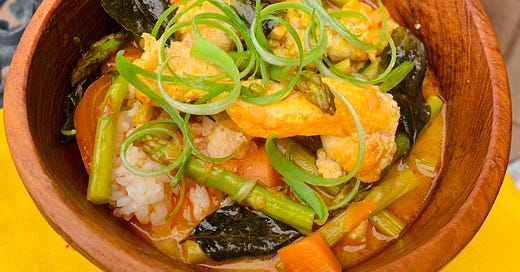Americans eat more tilapia than any other whitefish, but the environmental costs of farming, catching, and importing it mean Earth-friendly options can be hard to come by. But there’s an even tastier swimmer out there, and eating it could help restore balance to native waterways.
We’re talking about “Asian carp,” which is a catchall term for a group of four fish species native to southwestern China that were introduced to the Southern U.S. in the 1970s. Their initial mission was to gobble up weeds and parasites in aquatic farms, but due to flooding, accidental release, and their positively bananas jumping abilities, the fish have since spread into the Mississippi River and across the Midwest. Now a full-blown invasive species, the aquatic hoovers are sucking up all the native swimmers’ food and leaving a trail of destruction and economic damage in their wake.
Biologists have had plenty of ideas to monitor and control the spread, stuff like electrofishing and sonic barriers. But some fish and game officials—along with regional chefs—think we should belly up to the problem. These species are among the most commonly eaten freshwater fish in the world, but here in the States they can be a hard sell. Many people get them confused with bottom-feeding common carp, a throwaway fish with dark meat that can taste muddy. By comparison, the top-feeding plankton eaters have firm, clean, sweet-tasting meat that can hold up to any cooking technique, from grilling to deep-frying.
CATCH WITH CAUTION
Amateur fishermen can hook invasive carp along the Mississippi and throughout the Midwest but should follow guidelines from local fish and wildlife agencies to ensure their catches aren’t helping the species spread.
To help folks along, late last year the Illinois Department of Natural Resources rebranded the enemy as copi (short for copious). It’s currently gracing the plates of local fishermen and dotting restaurant menus throughout the region. We got our hands on a few pounds from Sorce Freshwater Co., a central Illinois seafood distributor, to see how it holds up in some of our favorite whitefish dishes, including a good ol’ Wisconsin fish fry and a quick Thai-style curry that’s ready in under 30.
Part I: The fish fry
Fried fish has been a Midwestern staple since the 1800s, when an influx of Catholic immigrants brought over the tradition of giving up meat on Fridays. They adapted their diets to include fish from Lake Michigan, including lake perch and walleye—both of which are currently under threat from invasive carp. I decided retooling this go-to preparation with copi (technically, mine’s silverfin carp) was the perfect revenge.
First, a quick anatomy lesson. These carp species don’t contain the predictable strip of pin bones found in popular species like snapper, but instead have two rows of Y-shaped bones crossing the fillets. A knowledgeable fishmonger can get rid of these for you (this is how my supply came), but if you’re bringing home a catch, here’s how to do it yourself. It’s worth the effort, because there’s a lot of meat on those bones.
To my delight, copi is meaty, yet tender and flaky, with only a mild fishy flavor. It’s the perfect canvas for any of your favorite whitefish recipes. And, of course, if you have a go-to spin on fried fish, it will take to it just fine. Add some coleslaw and rye bread, and the golden strips will make for a splendid fish sando, but simply dunking them in copi(ous) amounts of tartar sauce isn’t exactly a sacrifice. My personal riff on a beer batter taps rice flour for an extra-lacy crunch.
The full recipe is reserved for paid Cool Beans subscribers, but you can try us out for free for seven days.
Copi Fish Fry
Serves 4




